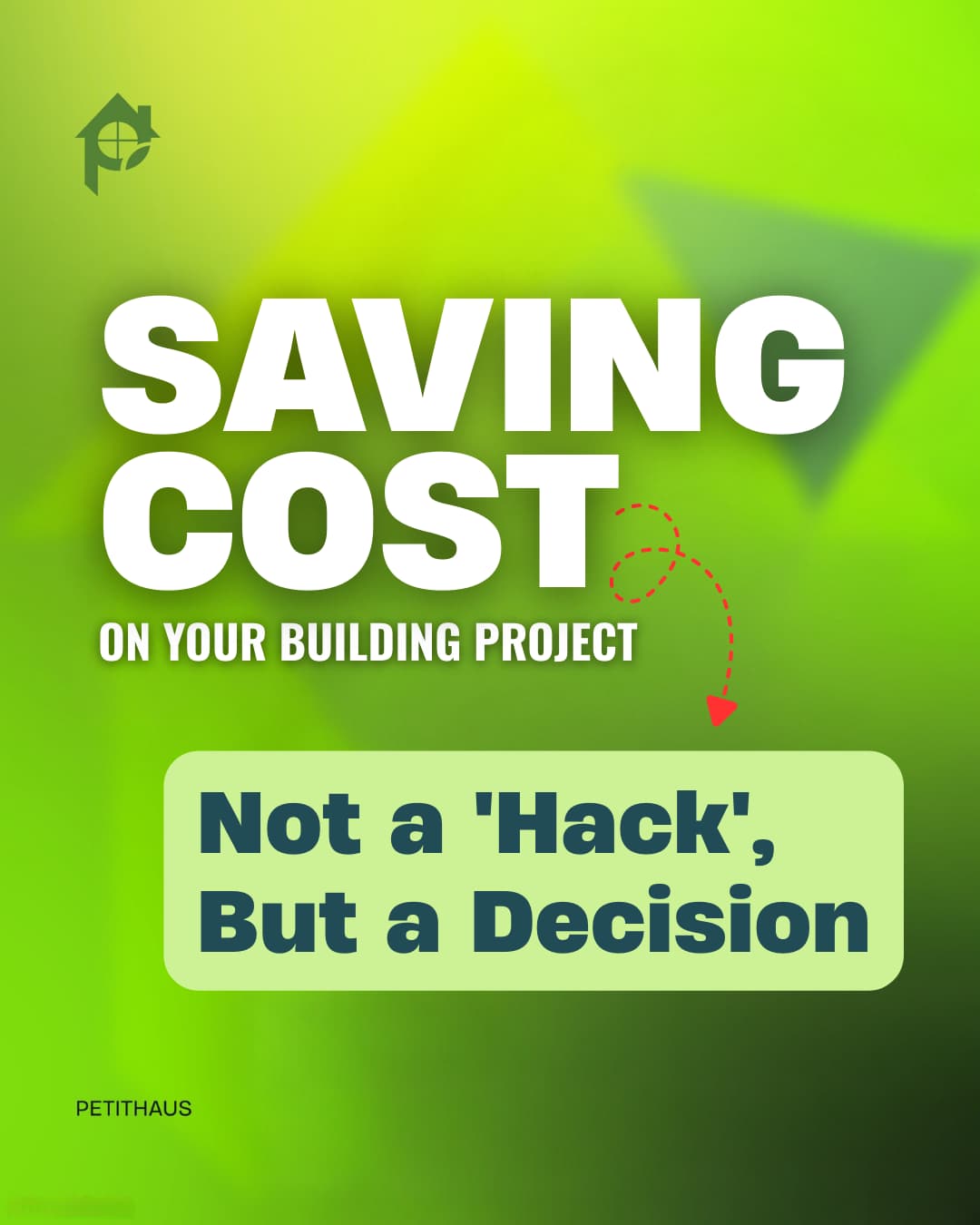
CONTACT US
Affordable Homeownership

SNEAK PEEK
Everyone wants to know the secret hack to save millions when building a house. People imagine there’s one trick contractors or developers are hiding.
But let's tell you something straight: there's no magic hack.
The real way to save money in construction isn’t by cutting corners; it’s by controlling the one thing that determines everything else: the design.
Let’s break it down step by step.

When you build, your costs are split into two big buckets:
Since land prices are beyond your control, the real battleground is the building cost. Now let’s open up the building cost like a puzzle and see all the pieces inside.
Think of building costs like three baskets.
This is what most people think about:
This group eats up the bulk of your money.
This part is often ignored, but it matters. It includes:
Skipping these doesn’t save money; it only sets you up for trouble later (think demolitions, fines, or delays).
This is where the architects, engineers, and quantity surveyors come in.
Most people treat design as “optional” or “too expensive.” But here’s the secret: Design is the cheapest yet most powerful lever to save money.
Every bag of cement. Every block, every length of iron rod, and every square meter of tile is determined by the design. If the design optimizes room sizes and layout, you avoid wasted space (and wasted materials).
If the design uses smarter structural spans, you save on steel and concrete.
Design is like the blueprint for your shopping list. Once you step onto the site, you’re stuck with whatever the drawing says. That’s why waiting until you’re already building to “look for savings” is too late. By then, you’ve already locked in the waste.
Here’s the mistake most owners make:
They think they can cut costs during construction by bargaining with artisans, buying cheaper materials, or skipping steps.
But what really happens?
Instead of saving, you end up paying double. First, in money wasted on the damages caused by finding a shortcut, and then, secondly, to fix the damages. That’s why reactive on-site cost saving is a mere illusion.
The real hack is design-led cost control. Here’s how it works:
Design isn’t just about cost. It’s about:
In short: Good design = smart living.
If you’re dreaming of saving millions on your project, don’t wait until you’re knee-deep in sand and cement to “find savings.” The smartest money you’ll ever spend is on design.
Because the design doesn’t just control how your house looks, it controls how much it costs, how long it lasts, and how well it serves you.
The best part? With PetitHaus, you don’t even need to stress about design.
Every Land-Pool co-owner automatically gets access to full architectural and engineering plans — optimized to save you money, time, and future headaches.
So while others are cutting corners (and paying for it later), you’re covered from day one.
Smart land. Smart design. Smart ownership.
👉 Join Land-Pool today, and let’s design your future together.
So don’t cut corners. Design smarter. Build smarter. Save smarter.
01.

02.
Category
Discover insights into creating affordable homeownership with PetitHaus.
